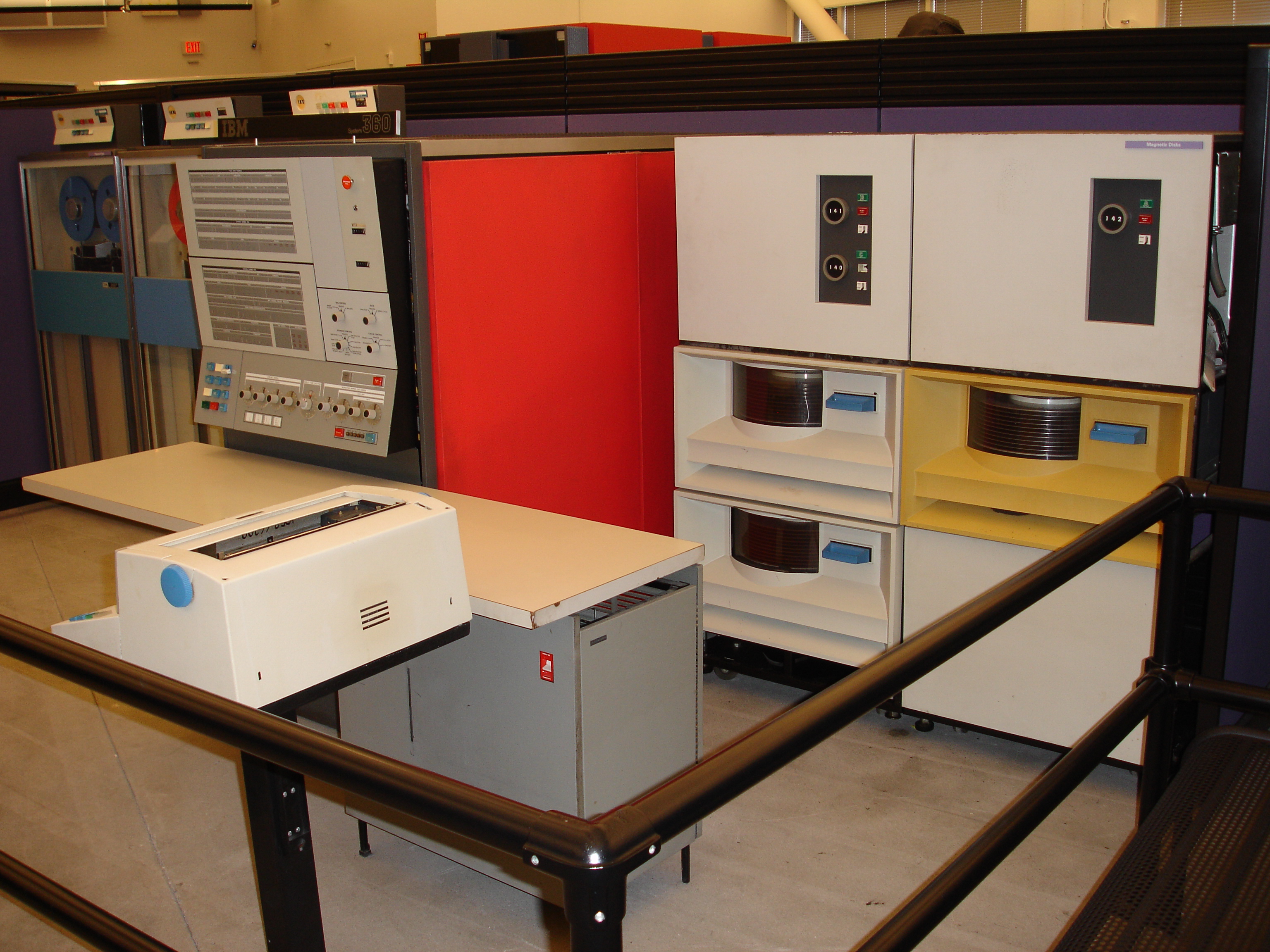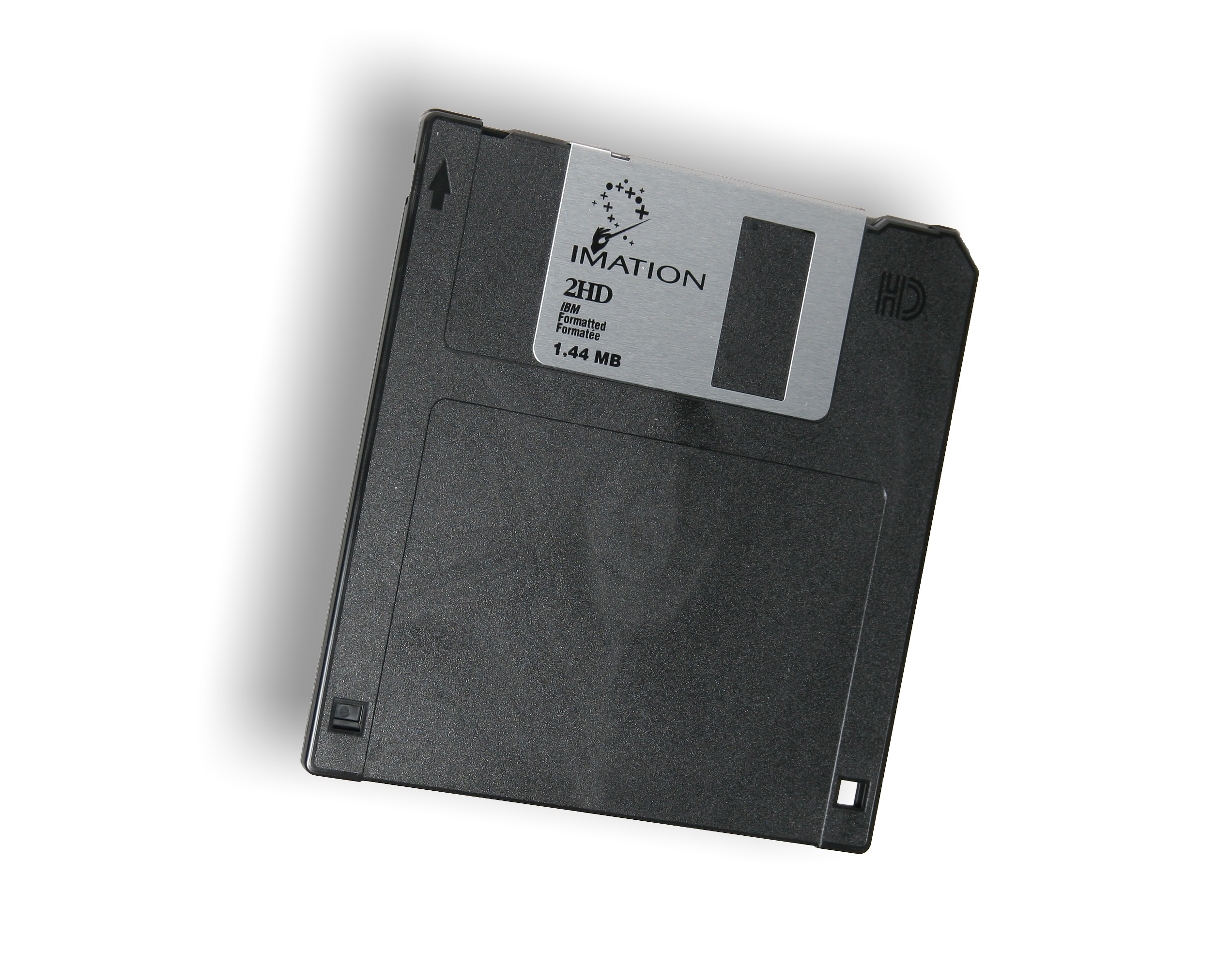|
IBM 2321 Data Cell
The IBM 2321 Data Cell announced in April 1964 (withdrawn January 1975) is a discontinued direct access storage device (DASD) for the IBM System/360. It holds up to 400 megabytes of data, with an access time of 95 milliseconds to 600 milliseconds, depending on the addressed strip position and data arrangement in each data cell. The 2321 was whimsically known as the "noodle picker" since the removable magnetic strips were flexible and resembled lasagna noodles. Characteristics The 2321 houses up to ten removable and interchangeable ''data cells'', each containing 40 megabytes. Each data cell contains 200 strips of magnetic tape, which are the basic recording media. Strips are wide and long. The total storage capacity is 400 megabytes or 800 million decimal digits. Up to eight 2321s can be attached to the IBM 2841 Control Unit, allowing an overall capacity of over three GB.IBM System Reference Library, IBM System/360 Component Descriptions, Form A26-5988 In comparison to t ... [...More Info...] [...Related Items...] OR: [Wikipedia] [Google] [Baidu] |
Direct Access Storage Device
A direct-access storage device (DASD) (pronounced ) is a secondary storage device in which "each physical record has a discrete location and a unique address". The term was coined by IBM to describe devices that allowed random access to data, the main examples being drum memory and hard disk drives. Later, optical disc drives and flash memory units are also classified as DASD. The term DASD contrasts with sequential access storage device such as a magnetic tape drive, and unit record equipment such as a punched card device. A record on a DASD can be accessed without having to read through intervening records from the current location, whereas reading anything other than the "next" record on tape or deck of cards requires skipping over intervening records, and requires a proportionally long time to access a distant point in a medium. Access methods for DASD include sequential, partitioned, indexed, and direct. The DASD storage class includes both fixed and removabl ... [...More Info...] [...Related Items...] OR: [Wikipedia] [Google] [Baidu] |
System/360
The IBM System/360 (S/360) is a family of mainframe computer systems that was announced by IBM on April 7, 1964, and delivered between 1965 and 1978. It was the first family of computers designed to cover both commercial and scientific applications and to cover a complete range of applications from small to large. The design distinguished between architecture and implementation, allowing IBM to release a suite of compatible designs at different prices. All but the only partially compatible Model 44 and the most expensive systems use microcode to implement the instruction set, which features 8-bit byte addressing and binary, decimal, and hexadecimal floating-point calculations. The System/360 family introduced IBM's Solid Logic Technology (SLT), which packed more transistors onto a circuit card, allowing more powerful but smaller computers to be built. The slowest System/360 model announced in 1964, the Model 30, could perform up to 34,500 instructions per second, with m ... [...More Info...] [...Related Items...] OR: [Wikipedia] [Google] [Baidu] |
Megabyte
The megabyte is a multiple of the unit byte for digital information. Its recommended unit symbol is MB. The unit prefix ''mega'' is a multiplier of (106) in the International System of Units (SI). Therefore, one megabyte is one million bytes of information. This definition has been incorporated into the International System of Quantities. In the computer and information technology fields, other definitions have been used that arose for historical reasons of convenience. A common usage has been to designate one megabyte as (220 B), a quantity that conveniently expresses the binary architecture of digital computer memory. The standards bodies have deprecated this usage of the megabyte in favor of a new set of binary prefixes, in which this quantity is designated by the unit mebibyte (MiB). Definitions The unit megabyte is commonly used for 10002 (one million) bytes or 10242 bytes. The interpretation of using base 1024 originated as technical jargon for the byte multiples that ... [...More Info...] [...Related Items...] OR: [Wikipedia] [Google] [Baidu] |
Lasagna
Lasagna (, also , also known as lasagne, ) is a type of pasta, possibly one of the oldest types, made of very wide, flat sheets. Either term can also refer to an Italian dish made of stacked layers of lasagna alternating with fillings such as ragù (ground meats and tomato sauce), vegetables, cheeses (which may include ricotta, mozzarella, and parmesan), and seasonings and spices. The dish may be topped with grated cheese, which becomes melted after baking. Typically cooked pasta is assembled with the other ingredients and then baked in an oven. The resulting baked pasta is cut into single-serving square portions. Origins and history Lasagna originated in Italy during the Middle Ages. The oldest transcribed text about lasagna appears in 1282 in the ''Memoriali Bolognesi'' ("Bolognesi Memorials"), in which lasagna was mentioned in a poem transcribed by a Bolognese notary; while the first recorded recipe was set down in the early 14th-century '' Liber de Coquina'' (''The B ... [...More Info...] [...Related Items...] OR: [Wikipedia] [Google] [Baidu] |
Magnetic Tape
Magnetic tape is a medium for magnetic storage made of a thin, magnetizable coating on a long, narrow strip of plastic film. It was developed in Germany in 1928, based on the earlier magnetic wire recording from Denmark. Devices that use magnetic tape could with relative ease record and playback audio, visual, and binary computer data. Magnetic tape revolutionized sound recording and reproduction and broadcasting. It allowed radio, which had always been broadcast live, to be recorded for later or repeated airing. Since the early 1950s, magnetic tape has been used with computers to store large quantities of data and is still used for backup purposes. Magnetic tape begins to degrade after 10–20 years and therefore is not an ideal medium for long-term archival storage. Durability While good for short-term use, magnetic tape is highly prone to disintegration. Depending on the environment, this process may begin after 10–20 years. Over time, magnetic tape made in the 1 ... [...More Info...] [...Related Items...] OR: [Wikipedia] [Google] [Baidu] |
IBM 2841
Beginning with its 1964 System/360 announcement, IBM's mainframes initially accessed CKD (Count key data) subsystems via a channel connected to separate Storage Control Units (SCUs) with attached Direct Access Storage Devices (DASD), typically a hard disk drive. This practice continued in IBM's larger mainframes thru System/370; however low end systems generally used lower cost integrated attachments where the function of the SCU was combined with that of the channel, typically called an Integrated File Adapter. The System/360 selector channel was followed by the System/370 block multiplexor channel which could operate as a selector channel to allow attachment of legacy subsystems. The SCU evolved into a Director and Controller, the latter typically labelled an "A-unit" (or A-Box") with the controller and at least one DASD physically in an A-unit. An Integrated Storage Control (ISC) is a Director within the cabinet of an IBM System. A Director could attach from one to four ... [...More Info...] [...Related Items...] OR: [Wikipedia] [Google] [Baidu] |
Gigabyte
The gigabyte () is a multiple of the unit byte for digital information. The prefix '' giga'' means 109 in the International System of Units (SI). Therefore, one gigabyte is one billion bytes. The unit symbol for the gigabyte is GB. This definition is used in all contexts of science (especially data science), engineering, business, and many areas of computing, including storage capacities of hard drives, solid state drives, and tapes, as well as data transmission speeds. However, the term is also used in some fields of computer science and information technology to denote (10243 or 230) bytes, particularly for sizes of RAM. Thus, prior to 1998, some usage of ''gigabyte'' has been ambiguous. To resolve this difficulty, IEC 80000-13 clarifies that a ''gigabyte'' (GB) is 109 bytes and specifies the term ''gibibyte'' (GiB) to denote 230 bytes. These differences are still readily seen for example, when a 400 GB drive's capacity is displayed by Microsoft Windows as 372&nbs ... [...More Info...] [...Related Items...] OR: [Wikipedia] [Google] [Baidu] |
IBM 2311
IBM manufactured magnetic disk storage devices from 1956 to 2003, when it sold its hard disk drive business to Hitachi. Both the hard disk drive (HDD) and floppy disk drive (FDD) were invented by IBM and as such IBM's employees were responsible for many of the innovations in these products and their technologies. The basic mechanical arrangement of hard disk drives has not changed since the IBM 1301. Disk drive performance and characteristics are measured by the same standards now as they were in the 1950s. Few products in history have enjoyed such spectacular declines in cost and physical size along with equally dramatic improvements in capacity and performance. IBM manufactured 8-inch floppy disk drives from 1969 until the mid-1980s, but did not become a significant manufacturer of smaller-sized, 5.25- or 3.5-inch floppy disk drives (the dimension refers to the diameter of the floppy disk, not the size of the drive). IBM always offered its magnetic disk drives for sale but did no ... [...More Info...] [...Related Items...] OR: [Wikipedia] [Google] [Baidu] |
Solenoid
upright=1.20, An illustration of a solenoid upright=1.20, Magnetic field created by a seven-loop solenoid (cross-sectional view) described using field lines A solenoid () is a type of electromagnet formed by a helix, helical coil of wire whose length is substantially greater than its diameter, which generates a controlled magnetic field. The coil can produce a uniform magnetic field in a volume of space when an electric current is passed through it. The term ''solenoid'' was coined in 1823 by André-Marie Ampère. The helical coil of a solenoid does not necessarily need to revolve around a straight-line axis; for example, William Sturgeon's electromagnet of 1824 consisted of a solenoid bent into a horseshoe shape (not unlike an arc spring). Solenoids provide magnetic focusing of electrons in vacuums, notably in television camera tubes such as vidicons and image orthicons. Electrons take helical paths within the magnetic field. These solenoids, focus coils, surround nearly th ... [...More Info...] [...Related Items...] OR: [Wikipedia] [Google] [Baidu] |
Hydraulic Fluid
A hydraulic fluid or hydraulic liquid is the medium by which power is transferred in hydraulic machinery. Common hydraulic fluids are based on mineral oil or water. Examples of equipment that might use hydraulic fluids are excavators and backhoes, hydraulic brakes, power steering systems, automatic transmissions, garbage trucks, aircraft flight control systems, lifts, and industrial machinery. Hydraulic systems like the ones mentioned above will work most efficiently if the hydraulic fluid used has zero compressibility. Functions and properties The primary function of a hydraulic fluid is to convey power. In use, however, there are other important functions of hydraulic fluid such as protection of the hydraulic machine components. The table below lists the major functions of a hydraulic fluid and the properties of a fluid that affect its ability to perform that function: Composition Base stock The original hydraulics fluid, dating back to the time of ancient Egy ... [...More Info...] [...Related Items...] OR: [Wikipedia] [Google] [Baidu] |
Mobil DTE Light
Mobil is a petroleum brand owned and operated by American oil and gas corporation ExxonMobil. The brand was formerly owned and operated by an oil and gas corporation of the same name, which itself merged with Exxon to form ExxonMobil in 1999. A direct descendant of Standard Oil, Mobil was originally known as the Standard Oil Company of New York (shortened to Socony) after Standard Oil was split into 34 different entities in a 1911 Supreme Court decision. Socony merged with Vacuum Oil Company, from which the Mobil name first originated, in 1931 and subsequently renamed itself to Socony-Vacuum Oil Company. Over time, Mobil became the company's primary identity, which incited another renaming in 1963, this time to Mobil Corporation. Mobil credits itself with being the first company to introduce paying at the pump at its gas stations, the first company to produce jet aviation fuel, as well as the first company to introduce a mobile payment device, today known as Speedpass. In 19 ... [...More Info...] [...Related Items...] OR: [Wikipedia] [Google] [Baidu] |






